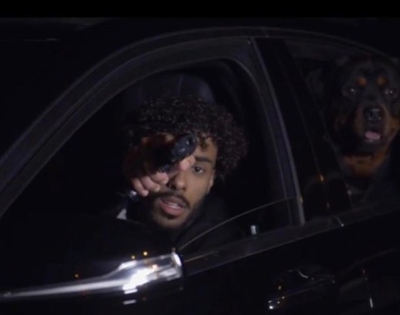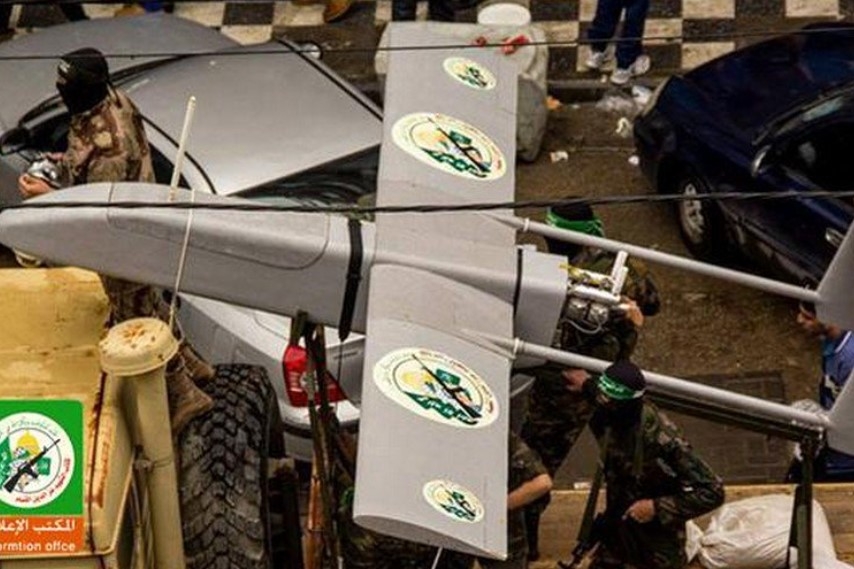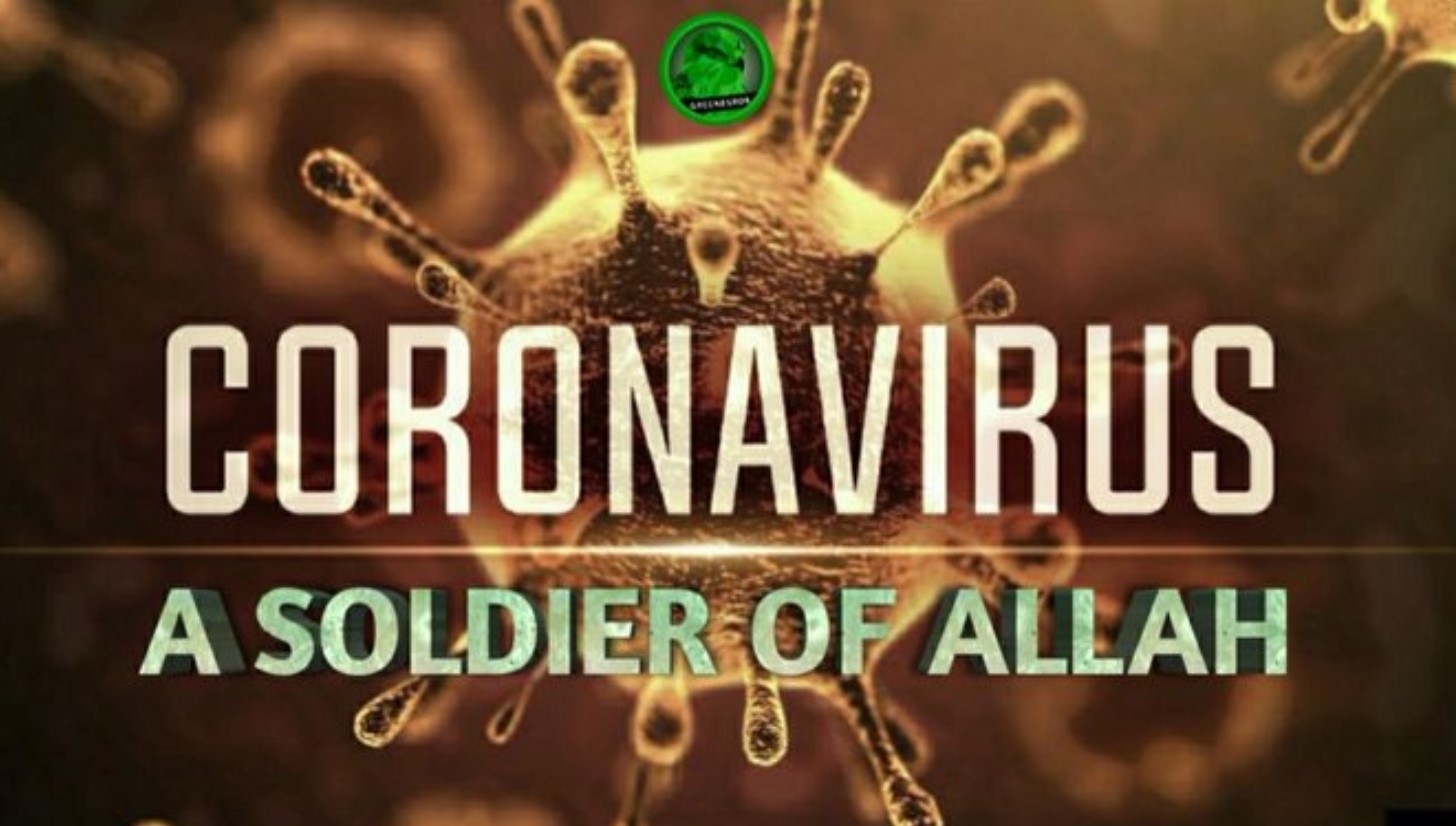 Rapper/alleged shooter Delano Geerman as seen in a music video. |
Peter de Vries now lies fighting for his life after being shot five times, at least once in the head, in what officials say was vengeance for his investigation of an underworld Dutch-Moroccan criminal organization known casually as the Mocro-Maffia. While not currently viewed as terrorism, the attack bears parallels, from the assault on a member of the free press to the background of the suspected shooter, Delano Geerman, a gangsta-rapper wannabe. A significant number of such rappers, both professional and amateur, were among the Western men who made hijrah, or the journey, to join the Islamic State.
Led by Dutch-Moroccan Ridouan Taghi, whom Dutch officials suspect has ties to the Iranian Secret Service, the Mocro-Maffia is considered one of the world's largest drug trafficking organizations. Among its massive cocaine shipments in 2017, for instance, was "2,045 kilos in a load of canned asparagus on its way to the Netherlands, and 5,883 kilos hidden among bananas on their way to Spain," according to the NL Times.
But Taghi doesn't just play with drugs. He stands accused of ordering a long list of assassinations, most of them in the Netherlands, where he is being held in the maximum security prison in Vught. And officials have little doubt that he ordered the attempted murder of Peter R. de Vries.
An acclaimed investigative reporter who subsequently earned a law degree, de Vries recently gained further renown for his work in this case, and for advising and defending Nabil B., a former Mocro-Maffia member accused of being the accessory to several murders. Nabil turned himself in to the police in 2017, and is now a Crown witness in the trial against Taghi and his gang.
Hence when Nabil's brother Redouan was murdered a few months later, officials believe it was Taghi who ordered the killing. And it was Taghi, they allege, who ordered the September 2019 killing of Nabil's lawyer, Dirk Wiersom, a murder Dutch authorities declared an attack on the country's democratic order.
Although the De Vries case has not been ruled a terrorist attack, Taghi has frequently been described as a terrorist – and many in law enforcement and even politicians are starting to join the call to designate him as such. In 2019, Dutch officials determined that he was receiving protection from the Iranian secret service – a particular concern for the Netherlands, as Iran is accused of ordering assassinations of several Iranian dissidents in the country. Officials believe Taghi assisted in at least one of these killings.
With the attempt on de Vries's life, the Dutch are again confronting what they see as a threat to the country's basic values and the right to a safe, free press, and the pursuit of truth.
Indeed, Delano Geerman, the man Dutch police believe fired the shots on the Lange Leidsedwaarstraat, holds a deep grudge against many of those values, if his lyrics are any indication. Originally from the Antilles, Geerman, who raps as "Demper," was arrested early last Thursday. Another suspect, the Polish Kamil Pawel Egiert, believed to have been the driver of the getaway car, was arrested shortly after the shooting.
What matters in this case is not that Geerman is from the Antilles, and not Morocco. He appears to be merely a hired hit man. What matters here is the valor and glory so many gangsta rappers find in violence, and their gnawing craving for fame. It is that combination which explains their vulnerability in so many cases to jihadist recruiters who prey on their hunger to matter, their hyper-masculine vision of the warrior-hero, and the anger that inspires the music and the lyrics that they write.
As Shiraz Maher, the deputy director of the International Centre for the Study of Radicalisation and Political Violence told the Guardian in 2018,
"There was this whole subculture that these guys were buying into: a macho world of clandestine behaviour beyond social norms ... A lot of the appeal to these people was based on masculinity and bravado rather than something ideological or religious."
Take, for instance, Abdel-Majid Abdel Bary, aka Jinn, once called "one of Europe's most wanted" ISIS fighters. Or the German Denis Cuspert, aka Deso Dogg, a convert who joined the Islamic State in 2013 and was reportedly killed there five years later; the French rapper Rashid Kassim, an ISIS recruiter who once filmed himself beheading two captives while issuing threats against France's then-president François Hollande; and Raphael Hostey, another British convert and rapper-turned-ISIS-fighter and recruiter who died in Syria in 2016.
There is still much unknown about the attempt on De Vries's life, and the roles Geerman and Egiert may have played. Notably, a photograph of Egiert distributed through the Dutch press depicts him sporting boxing gloves – a hobby he seems to have in common with, among others, Boston bomber Tamerlan Tsarnaev, Oklahoma bomber Terry Nichols, white supremacist Anders Breivik, Pulse Nightclub shooter Omar Mateen, and Osama bin Laden. Any one of them could also be said to fit Maher's description of the potential terrorist or recruit.
But whether or not the attack on De Vries is declared terrorism, what is clear is the ways in which violent, criminal organizations based in the Middle East and North Africa prey on young men who, by virtue of their romanticizing violence and heroism, are lured to commit despicable, murderous acts. It's a quality few in the counterterrorism community have paid much attention to. Maybe it's time to start.
IPT Senior Fellow Abigail R. Esman is a freelance writer based in New York and the Netherlands. Her new book, Rage: Narcissism, Patriarchy, and the Culture of Terrorism, was published by Potomac Books in October 2020. Follow her at @abigailesman.
Copyright © 2021. Investigative Project on Terrorism. All rights reserved.



 Is 2023 the Year of Jihad's Resurgence?
Is 2023 the Year of Jihad's Resurgence?
 Radical Middle East Actors Increasingly Turn to Drones
Radical Middle East Actors Increasingly Turn to Drones
 As Islamists Spread Conspiracies, ISIS Seeks to Exploit Coronavirus Crisis
As Islamists Spread Conspiracies, ISIS Seeks to Exploit Coronavirus Crisis